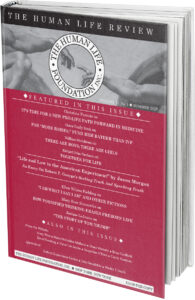“Stay with us”
The season that extends for forty days from Easter Sunday to the feast of the Ascension celebrates the time when Jesus revealed his resurrection in many ways. The four gospels give us only a selection of our Lord’s appearances—just enough to illustrate their great variety. Each is different from the others in ways that are meant to show an aspect of our Lord’s relationship to his disciples, and to us, who are united to him in his risen life by faith and love.
St. Luke’s gospel (24: 13-35) describes the way Jesus revealed himself to two disciples as they walked the seven miles from Jerusalem to a village called Emmaus after they had seen him crucified. It shows our Lord’s relationship to believers through his sacrament of love, the Holy Eucharist. Jesus made himself known to his disciples “in the breaking of the bread.” In three significant details, the story of Emmaus shows how we too can come to know our risen Lord “in the breaking of the bread.”
First, the two disciples, Cleopas and his companion, are on a journey, keeping one another company in sorrow, as they try to put a distance between themselves and the terrifying scene of violence, suffering, and death that they had witnessed in Jerusalem. They were trying to get a perspective on that scene, so as to be able to resume their ordinary lives.
Second, Jesus joins them on their journey as a friendly stranger, drawing them out in conversation, correcting their understanding of the “things that [had] taken place” in Jerusalem, and bringing healing to their sorrow.
Third, only after Cleopas and his companion urgently invite this friendly stranger to “stay with” them as they approach their destination, do they recognize him as their crucified Lord. He, who had been with them incognito on the way, reveals his identity to them “in the breaking of the bread.”
The journey Cleopas and his companion are on is one way of describing life in this world stripped of the things that make it pleasant and exciting. All of us at some time will experience this world that way: as a place of pilgrimage in sorrow, whose main consolation is companionship. Everybody will have such an experience, and I dare say for very many people, that experience of life is normal.
We live in a “vale of tears,” a place of violence, suffering, and death. The pleasant and exciting things about this world, its beauty and goodness, its promises and rewards, are all conditioned by this violence and suffering; all that lives in this world is covered with the shadow of death. And that is the world Jesus came to. Our living Lord joins us, present but unrecognized by us. Along the way of sorrow, companionship is the best consolation. Indeed, friendship is the single indispensable good of life: With it, any sorrow is tolerable; without it, any other good—health or wealth, honor or success—is worthless.
God sent his Son into the world to befriend us, and to make of us friends of God. That is the main point of Jesus’ mission, as we know from the record of our Lord’s final conversations with his friends on the night he was betrayed (John 14-17). Only the first part of his mission was finished when he died on the cross. The second part began with his resurrection appearances, and continues with the coming of the Holy Spirit to extend our Lord’s mission to the whole world. The third and final part of his mission will be when he comes again in glory at the end of time to judge the world, and to complete God’s new creation.
So, you see, on the road to Emmaus Jesus resumes his mission of befriending us with two disciples who thought that mission had failed when he died. He enlightens their minds to see the true significance of the things that they had witnessed in Jerusalem: Hidden at the heart of all that suffering and violence, the love of God was being poured out on the world. And so, with that correction to their understanding, their sorrow was gradually healed.
Befriending them along their way of sorrow, Jesus, raised from the dead, restores the faith of his disciples, and renews their hope. The world continues as it had been since the fall of Adam; until the end of time, it will always be a vale of tears. But at its heart the love of its creator is pouring out, seeking to befriend us.
Only when Cleopas and his companion urgently invite the Lord to “stay with” them does he reveal his true identity. He does so in “the breaking of the bread,” which was the Church’s first name for the Holy Eucharist. This gospel story expresses our faith that the risen Lord is present to us when we celebrate the Holy Eucharist—always present, personally present, though invisible (the gospel says that Jesus “vanished from their sight”), and, as he was to his disciples on their way of sorrow, present to befriend and enlighten us, to renew our hope. He will do this for us, however, only if we urgently invite him to “stay with us.”
That phrase, “stay with us,” that invitation from our hearts, is the authentic voice of Christian faith. We don’t just believe that Jesus lives; we want the living Jesus to “stay with us.” He waits for our invitation to come into our lives, to befriend us, and to make us friends of God. And every time you come to receive the Holy Eucharist, the risen Lord is there, ready to accept your invitation.









